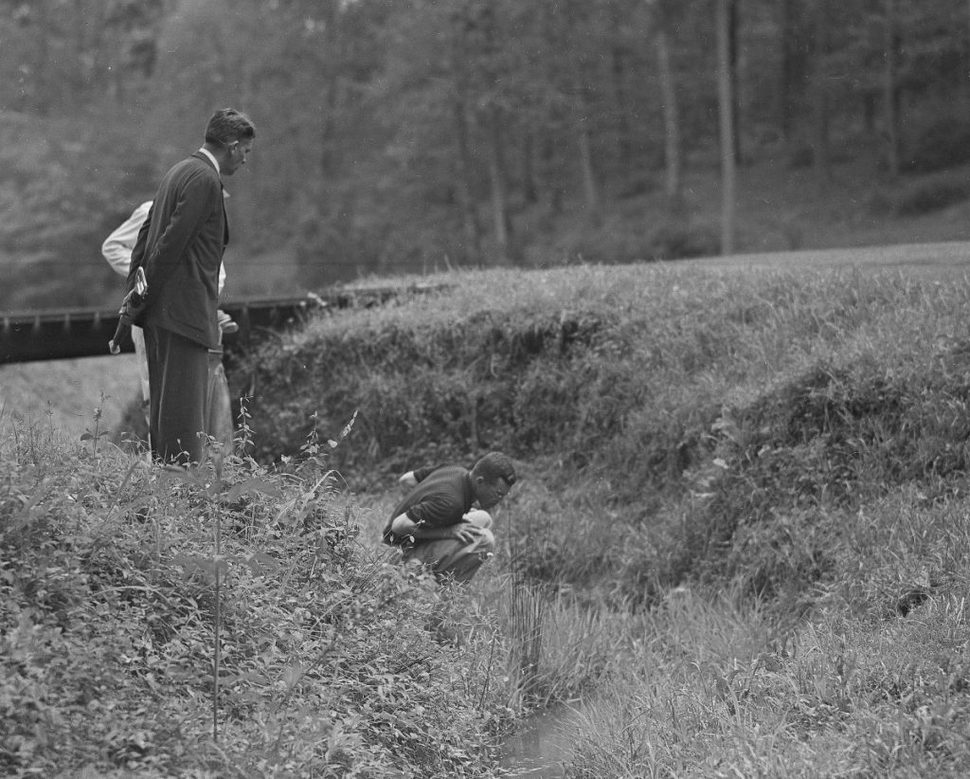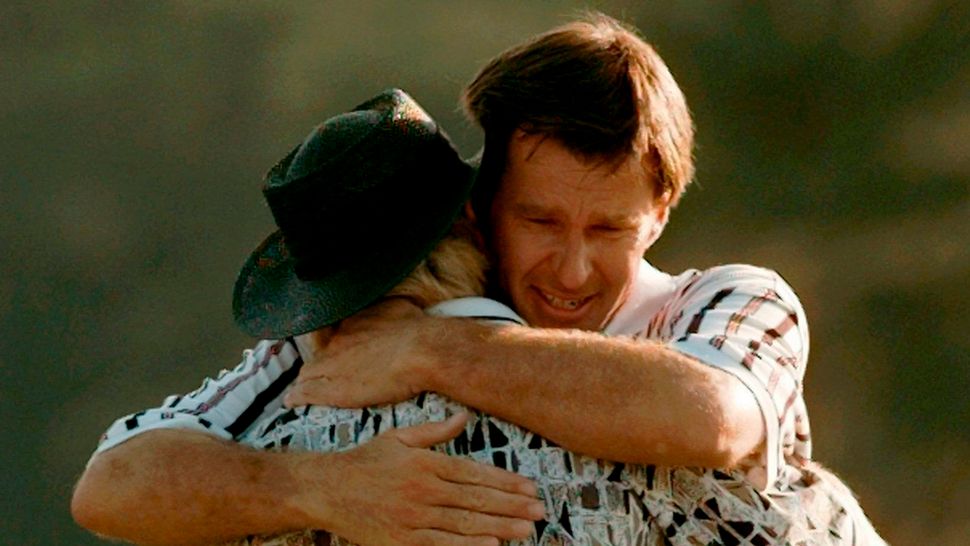In the world of golf possessing a Green Jacket is the ultimate barometer of success. It’s a calling card like no other. No amount of money can buy you one. You must earn it.
Being a Masters champion separates you from all others who play the game. You are now part of golf history.
The stakes in winning are incredibly high. Possessing a Green Jacket elevates your name to be included with a roster of the sport’s all-time players. Being able to win a Masters title can be the catalyst for other future triumphs.
While success can be so rewarding, the flip side can be devastating for any player. Failure at such moments can be debilitating, leaving permanent scar tissue. A number of golfers who were ever so close were never able to return to that moment. Fifteen minutes of fame, as Andy Warhol famously stated, does not mean a likely pathway back to ultimate greatness.
However, some who experienced major disappointment at Augusta were able to regroup and gain some measure of satisfaction at other major events.
10) Kenny’s curtain call crash
Kenny Perry sought to become the oldest winner of a major championship at 48 years, 8 months and two days by winning the 2009 Masters. Leading by two with two to play, the Kentuckian appeared ready to claim his first major title after nearly holing his approach at the par three 16th.
Then the story turned swiftly from a round with no bogeys on the card and finishing with two of them at the most inopportune time. Eventually ending up in a playoff, he would lose to Angel Cabrera, who became the first winner from South America.
Perry would later claim the US Senior title but play-off losses at the Masters and years earlier at the PGA Championship in his home State of Kentucky, will forever be associated with his career.
9) Sneed sneezes away certain win
Ed Sneed was a journeyman professional for much of his career but at the 1979 Masters he played superbly and entered the final round with a five-shot edge.
As late as the 69th hole Sneed held a three-shot lead. Inexplicably he would bogey each of the final three holes, culminating with a miss from four feet at the final hole. The ball teetered on the left edge of the cup but refused to fall.
Sneed would go into the first Masters sudden death playoff with Fuzzy Zoeller and Tom Watson. Zoeller birdied the second hole of the playoff (the 11th) and claimed The Green Jacket.
8) A gimme for the Masters, not so for Hoch
Scott Hoch had a quality career as a golf professional playing on the PGA Tour but it was the 1989 Masters which forever sealed his fate in failing to close out an event on three different occasions.
Hoch entered the final round one shot behind leader Ben Crenshaw. In reaching the 18th hole, Hoch faced a 25-foot putt for the title. He missed. In a playoff with Nick Faldo, Hoch had another opportunity from 45 feet to win the title. He missed, leaving himself just beyond two feet for the title. Incredibly Hoch missed again to leave himself a four-foot putt to stay in it. He would make that but lose to Faldo on the following hole (the 11th).
7) Arnold’s too-early celebration in 1961
When Arnold Palmer approached the tee box of the 18th hole in the final round of the 1961 Masters, the pathway to ultimate stardom was right in front of him. No player had ever defended their Masters title so all Palmer needed to do to make history was make par.
As he walked up the fairway someone in the gallery congratulated Arnie on what he believed was a foregone conclusion and a date with destiny. Instead of staying focused on the matter at hand, Palmer accepted the wishes and never thought for a moment that any downside could happen. The King’s approach to the 18th hole sailed into the right green-side bunker. A somewhat skulled bunker shot flew the green and landed on the far-left side off the putting surface. The chip shot played was not tight to the hole leaving 15 feet to secure a tie with Player. Palmer missed the putt and what seemed like certain victory just minutes before turned into an astonishing collapse.
The redeeming aspect for Palmer was turning matters around and winning the very next year. Sportingly, that happened against Player who appeared to be in firm command until late round theatrics by Palmer pushed matters into an 18-hole playoff which Palmer would win.
6) Jordan’s journey ends with splash at the 12th
Coming into the 2016 Masters, Jordan Spieth was on a momentum ride of considerable proportions. In 2015 he came near to winning the Grand Slam in a single calendar year, ultimately winning two of the events
In his first appearance at Augusta in 2014 he finished second behind Bubba Watson. The next year he claimed the Green Jacket with a record score of 200 for the first three rounds. The 21-year-old continued his top tier play culminating in a four-stroke win and tying the then four-round scoring record.
Coming into the 2016 Masters, Spieth looked set to become just the fourth player to successfully defend their title as he birdied four holes in a row, starting at the sixth. That gave him a five-shot lead but the first cracks appeared as he bogeyed the 10th and 11th.
Spieth still commanded a three-shot lead at the treacherous par three 12th before splashing two balls into Rae’s Creek and losing a lead he never reclaimed. Danny Willett would take home The Green Jacket.

Related: Letter to America – Alistair Cooke and The Masters
5) Weiskopf’s watch is just never the right time.
Tom Weiskopf’s game seemed a perfect match for Augusta National. The lanky and powerful Ohioan finished second In 1968 and did similarly in 1972 and 1974 respectively. The 1975 championship pitted the three best players in the world – Jack Nicklaus, Johnny Miller and Weiskopf all playing at peak form.
Weiskopf led as late as the 69th hole before three-putting the 16th after watching Nicklaus hole a monstrous 45-foot birdie to seize control. Weiskopf had one final opportunity to tie Nicklaus at the 18th but his eight-foot putt failed to drop.
Weiskopf would never come close again. He also has the dubious honour of jointly holding the highest score with a 13 on the par-3 12th at the 1980 Masters.
4) Patton’s march and then Patton’s plunge.
The 1954 Masters showcased a heavyweight playoff between two icons in Ben Hogan and Sam Snead which ultimately was won by the latter. However, the event had a Horatio Alger storyline that nearly came to pass. An amateur named Billy Joe Patton excited crowds with his stellar play and he held the lead after each of the first two rounds.
Patton fell five shots back entering the final round but resurrected his chances with an amazing hole-in-one at the par three sixth. Two consecutive birdies happened at the eighth and ninth holes. When the 31-year-old North Carolinian reached the tee at the 13th, he was now just one behind Hogan.
Facing a critical decision on the par-five hole on whether to go for the green in two shots, those in the gallery shouted, “Go Billy Joe go!”
Patton made a bold play that resulted in failure and a double-bogey seven. Patton was undeterred and birdied the 14th hole to rejoin the battle. At the par five 15th, Patton followed his instincts and attempted to reach the hole in two blows. Once again, failure resulted with the ball disappearing into the fronting water hazard.
Patton would end the day just one shot short of the playoff between Hogan and Snead. Now looking back, one only has to wonder, if Patton had chosen a safer course of action at either of the two par five holes, he might very well have been the first amateur to win the green jacket. Patton was resolute in reaffirming his “go for it” stance because it was that philosophy that got him into contention in the first place.

3) McIlroy’s vanishing act in 2011
The Masters was the scene for the emergence of golf’s next superstar Rory McIlroy. Born in Northern Ireland, the 21-year-old wasted no time in demonstrating his talent as he scored a 65 and became the youngest to ever lead after the first day.
The Ulsterman continued his fine form and led after both the second and third rounds and headed into the final day with a four-shot lead.
Sunday’s final round started tentatively but Rory was still in the lead by one shot as he reached the 10th tee. Suddenly, McIlroy hooked the ball way left of the fairway and registered a triple-bogey seven. He would continue down a dark path with bogey and double-bogey at the 11th and 12th holes. One final bogey would come at the 15th. McIlroy closed out with an 80, the worst final round score by a professional in the history of the event.
However, McIlroy would bounce back quickly. At the next major event – the US Open at Congressional – The Augusta flameout was replaced with a tour de force performance, resulting in a new four-round score of 268.
2) ‘V’ is for victory, just not for Venturi
Ken Venturi could have been the first amateur to win the Masters in 1956. He led by four with one round to play. Weather conditions turned especially windy and Venturi blew up to an 80 to lose by a shot.
Four years later he was in position to win the title as a professional but Arnold Palmer finished with two late birdies and again a runner-up finish.
Venturi had always coveted The Green Jacket but none would ever come his way. Fortunately, he would win one major title, claiming the 1964 US Open in sweltering heat in Washington DC.
1) Greg’s going away present – no Green Jacket
Greg Norman had been an Augusta fixture since his debut in 1981 when finishing fourth.
Between that year and 1995 Norman had been in the hunt numerous times, six times in the top ten with two excruciating runner-up finishes in 1986 and 1987. The former coming from a flared four-iron approach to the final hole which went way right and the latter when Larry Mize holed his incredible chip shot in a playoff the very next year.
Norman started the 1996 Masters in grand fashion, firing a course-record equaling score of 63. Heading into the final round with a six-shot lead over long-time rival Nick Faldo, the Aussie appeared on his way to becoming the first Green Jacket winner from that country.
The final round was simply torture to watch. Drip by agonizing drip Greg disintegrated. Nothing went right and he limped home with a lacklustre 78.
Few golf experts ever expected Norman to be winless at Augusta. The course seemed ideally suited to his playing style, but for whatever the reason, Greg’s failure to don The Green Jacket epitomized a career that never seemed to fulfil the immense talent he possessed.
